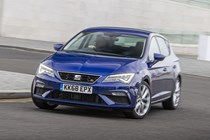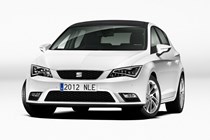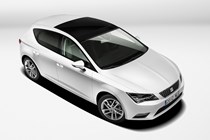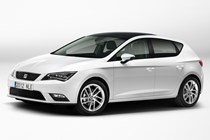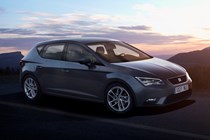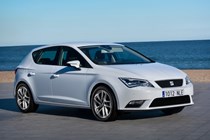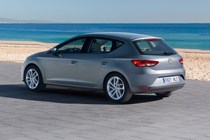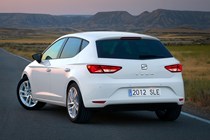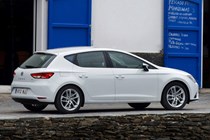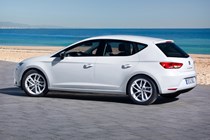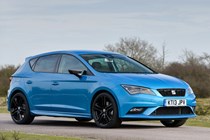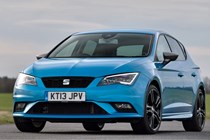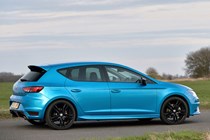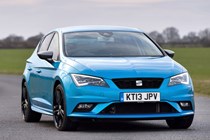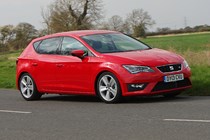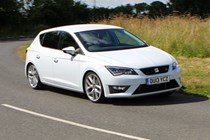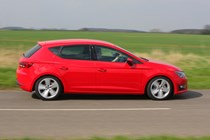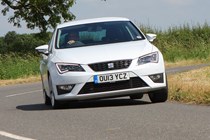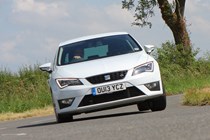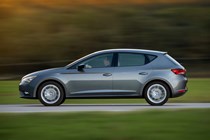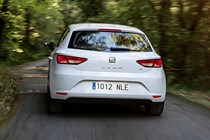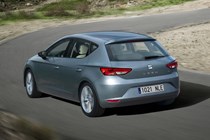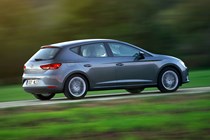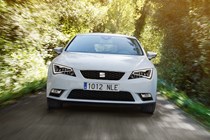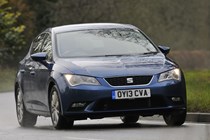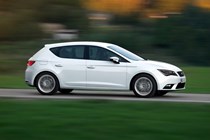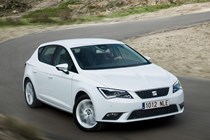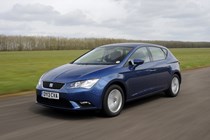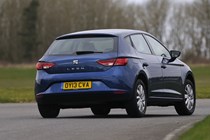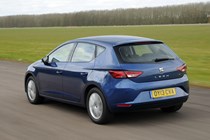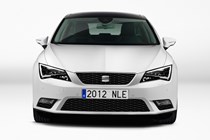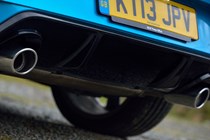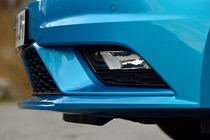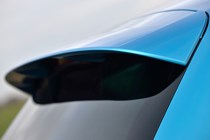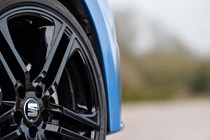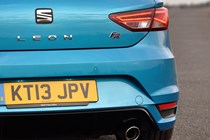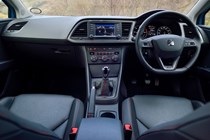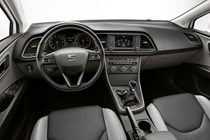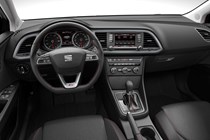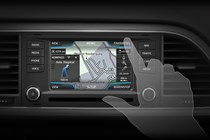
SEAT Leon Hatchback (2013-2020) engines, drive and performance
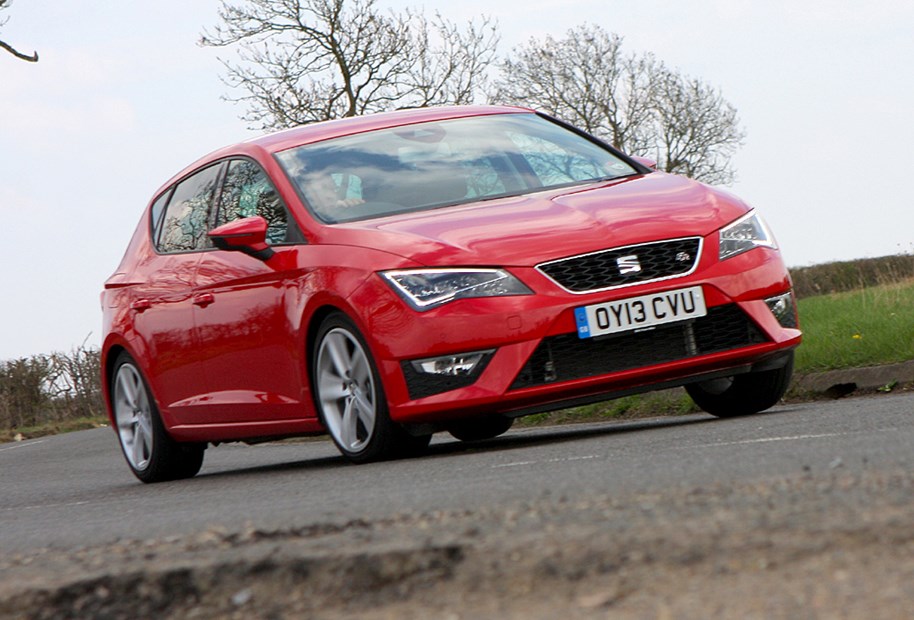
- Three petrol and two diesel options
- Cupra performance version also available
- Five- and six-speed manuals, plus DSG automatic
There is no real weak link in the SEAT Leon range when it comes to engines. Performance for all models is good, with adequate acceleration even in entry-level 1.0-litre petrol form – though the 1.6-litre diesel feels a little lethargic at times.
Whichever model you choose, it’ll be capable of sprinting from 0-62mph in less than 10 seconds, with all able to break the 120mph mark, meaning it’ll have plenty of power in reserve at motorway speeds.
Plenty of TSI petrol engines
Here you can choose between a three-cylinder 115hp 1.0-litre TSI or four-cylinder 1.5-litre TSI in 130 or 150hp guise. Unsurprisingly, the most frugal is the 1.0-litre 115hp, which returns 50.4mpg – despite being capable of hitting 62mph in a reasonable 9.8 seconds. It’s an exceptionally strong engine considering its size, and arguably makes the more powerful 130hp 1.5-litre almost feel redundant. If you’re looking for a petrol and you do plenty of motorway miles, however, the 130hp or 150hp 1.5-litre TSI is the best option. It’s got enough in-gear performance and should see you accelerate to 62mph in 8.2 seconds. Plus, it’s impressively economical in both forms.
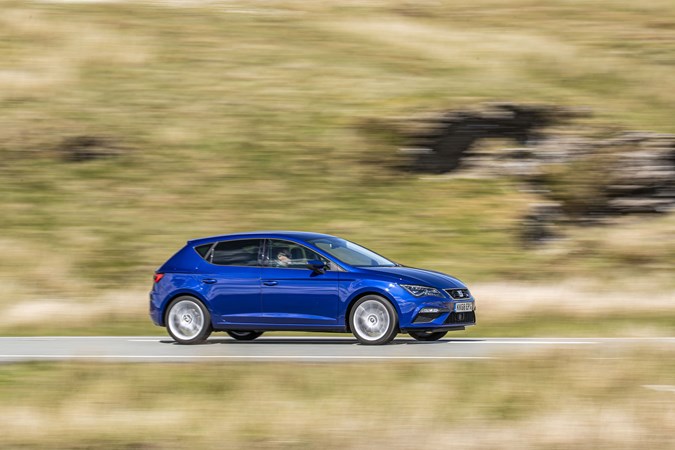
Strong TDI diesel engines
Opt for a diesel and you can choose from an entry-level 115hp 1.6-litre TDI or a 150hp 2.0-litre TDI unit. Despite the big spread in power, there’s not much difference in claimed fuel economy, with the 115hp model returning 57.6mpg in manual form and the 150hp managing 56.5mpg. Opt for the latter with a seven-speed DSG automatic, however, and it matches the 1.6-litre model’s 57.6mpg. The 1.6-litre diesel takes 9.8 seconds to get to 62mph, dropping to 8.4 seconds in the DSG-auto 150hp version.
The entry diesel is a good choice then, but the extra torque of the 150hp unit makes it far more flexible, and is ultimately much more relaxing to drive over longer distances. The 1.6 offers 250Nm next to the 2.0-litre’s 340Nm – that’s a lot more usable, plus the availability of a DSG in the higher-output car makes it more appealing here.
Seriously rapid SEAT Leon Cupra
For those after the best and most exciting performance, however, the 290hp Leon Cupra is also available, cracking 0-62mph in just 6.0 seconds and going on to a limited top speed of 155mph. Sadly, the exhaust note isn’t as characterful as it was on earlier models yet there’s still a decent sense of occasion whenever you put your foot down. It’s front-wheel drive only, mind, with only the ST estate version available with 4Drive all-wheel drive.
Manual and DSG automatic gearboxes
The 115hp diesel engine comes with a five-speed manual gearbox, with all other models featuring a six-speed manual as standard. Petrol 150hp 1.5-litre TSIs also all be specified with a seven-speed DSG automatic gearbox – as can the 115 and 150hp diesel. Both manual and automatic options are familiar VW Group stock; slick in action and easy to use in the case of the former and smooth yet punctual if you pick the auto.
Four driving modes
The SEAT has four driving modes and you can alter these to match your mood. They are called Eco, Normal, Sport and Individual and they alter the engine and steering response as well as the interior ambient lighting (red in sport mode and white in normal and eco mode) and engine sound. You can create your own preferred profile in the Individual setting by choosing your favourite elements of each mode, which you can then activate at the touch of button.
How does the Leon drive?
- Engaging to drive with little body-roll
- Vague steering detracts from confidence
- Slick gearchange and sharp brakes
SEAT Leon handling has always been fairly good and this third generation is no different.The Leon is fun to drive; there is little body lean when taking corners at speed, while the steering is well-weighted. You can’t feel much through the steering, however, which reduces your confidence in how much grip the tyres have.
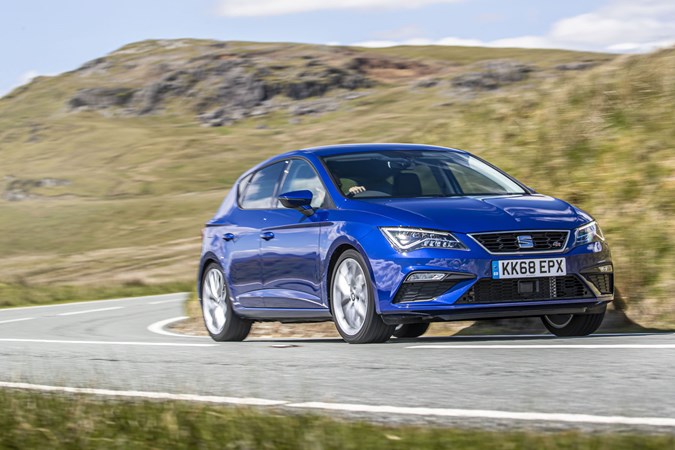
This is a shame, as you never really feel completely at one with the car. The Ford Focus and the BMW 1 Series are both better cars to drive. The ride is a little bit firm, too, so it is best to opt for smaller wheels, if you’d rather a more comfortable ride than a sporty feel.
Surprisingly, despite being firmer still, the Cupra models remain impressively comfortable. That’s because they include Dynamic Chassis Control adaptive suspension as standard (this is optional on lesser Leons) – which can be switched between comfort-oriented and sportier driving modes. Whichever setting you choose there’s a good balance between ride and roadholding.


